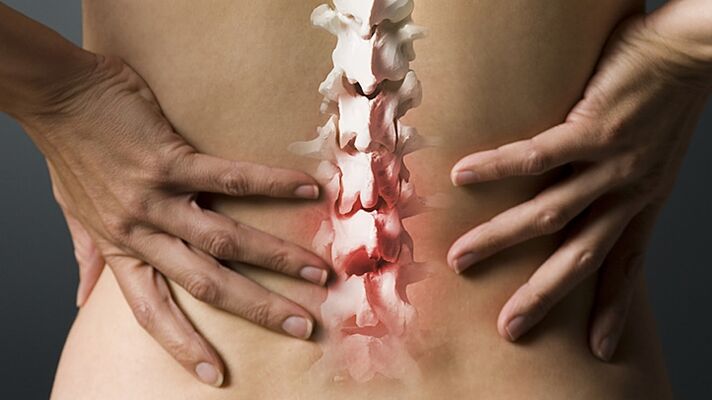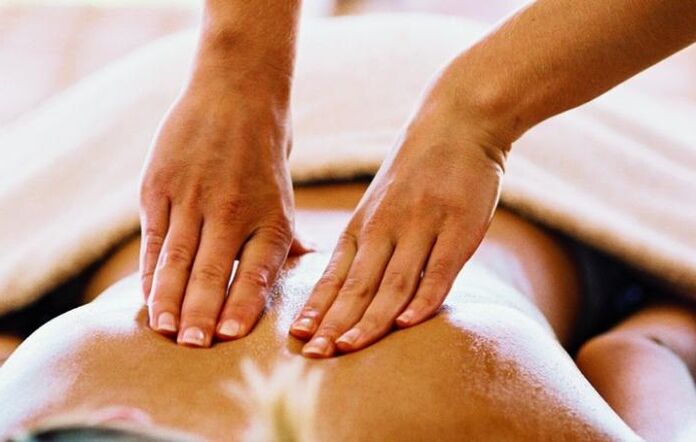
Spinal osteochondrosis is a disease characterized by degenerative-dystrophic lesions of the vertebrae and intervertebral discs.
Scientists call this disease a "disease of civilization" because in the modern world, man is associated with a straight posture and an increasing strain on the spine. Usually, osteochondrosis begins in young people between the ages of 20 and 25.
Cause
The exact cause of osteochondrosis of the spine has not been established. Experts point to the factors contributing to its formation.
Traumatic factor. Permanent spinal overload (microtrauma) contributes to accelerated wear of the spinal plates. Antifysiological postures (working in a bent position for a long time, holding in one position for a long time) lead to the development of subluxations in the intervertebral joints.
Pathology of musculoskeletal system development. Flat legs, shortening of one leg, lumbarization of the vertebrae, and other similar pathologies increase the load on the spine and, as a result, accelerate degenerative processes.
Age factor. The development of osteochondrosis of the spine is seen by many doctors as a manifestation of the natural aging of the human body.
Vascular factor. An association has been found between a decrease in blood flow (ischemic processes) and an acceleration of spinal pathological processes.
Factor in the change in hormone levels. Natural hormonal changes in the body (pregnancy, lactation, menopause, menopause) cause an increase in degenerative processes.
Factor in endocrine hormonal diseases. Diseases such as obesity, diabetes mellitus, myxedema (an inflammatory lesion of the thyroid gland) and others contribute to the development of osteochondrosis of the spine.
Classification and symptoms
The symptoms depend on the localization of the pathological process.
Osteochondrosis of the cervical spine. The cervical spine contains blood vessels that feed the brain. At this stage, due to the degenerative changes, the organs of the head do not receive an adequate blood supply. This often leads to cerebrovascular accidents.
The main symptom of cervical osteochondrosis is headache. This pain is usually constant and gets worse in the morning and during exercise. It forms in the back of the head and emits the parietal-temporal region. Pain syndrome is often accompanied by dizziness, "flies" flashing in front of the eyes, colored spots.
In addition, nerve pinching often contributes to the appearance of scalp, throat, and neck pain. Pain syndrome sometimes grips the arm, the shoulder. It can be weakened or increased by turning the head or changing the position of the body.
Signs of osteochondrosis of the cervical spine include:
- fluctuations in blood pressure;
- tinnitus, hearing loss;
- vision impairment;
- violation of coordination of movements and gait;
- hoarseness or weakening of the sound;
- tooth decay;
- snoring during sleep.
Osteochondrosis of the thoracic spine. Manifestations can be varied and depend on the localization and severity of the disease. Compression of chest nerve radicals leads to intercostal neuralgia. It manifests itself in acute chest pain, which is exacerbated by inhalation, certain movements, coughing and laughter. Pain syndrome intensifies after a person has been in a situation for a long time or after physical exertion. Osteochondrosis of the thoracic spine is often the cause of diseases of the stomach, lungs, heart, and other human organs.
Osteochondrosis of the lumbar spine. It often hits people who spend a long time "sitting" (drivers working at a computer).
The symptom of osteochondrosis of the lumbar spine is a painful, painful character that is exacerbated by sudden movements (weight lifting, sneezing, coughing) and prolonged stay in one position. After a bent position, the patient has difficulty straightening his back, and sometimes severe pain interferes with movement. The pain is significantly reduced in the horizontal position of the body. Squatting or lying on the healthy side brings relief.
Pain syndrome in osteochondrosis of the lumbar spine is often localized in the lower back and radiates to the legs, sacrum, and often the pelvic organs. Overloading the spinal muscles and lifting weights due to awkward movement causes back pain. Lumbar osteochondrosis of the spine is often manifested by a decrease in sensitivity and numbness in the area of pain. The patient may experience a tingling sensation, "running creeps. "Symptoms are often accompanied by spasms of the arteries in the legs, a decrease in the temperature of the skin on the legs, and coldness in the legs. Some patients experience dehydration and peeling of the skin, and sweating problems.
If you think you have osteochondrosis of the spine and symptoms of the disease, consult an orthopedist or therapist.
Treatment

Therapy for this disease is aimed at relieving pain, restoring the functions of the spine, and preventing the development of dystrophic pathologies of the spine.
The duration of treatment for osteochondrosis of the spine depends on the severity of the disease, the age of the patient, and the methods of treatment.
The following therapeutic methods are used in the complex treatment of the disease.
- Physiotherapy. This is one of the main methods of treating osteochondrosis. Physiotherapy exercises include joint gymnastics and exercises on rehabilitation equipment. The result is a normalization of the nutrition of the intervertebral discs, a reduction in metabolism, proper muscle spasm, and a reduction in spinal load.
- Physiotherapy. This method uses the effects of laser, ultrasound, magnetic field, low frequency currents on the body for treatment. Due to the use of physiotherapy, the duration of treatment is significantly reduced and its effectiveness is increased.
- Massage. An effective method for relieving muscle pain and tension, improving blood circulation and strengthening the body in general.
- Manual therapy. This treatment for osteochondrosis of the spine allows the normal mobility of the organs to be restored, improves blood supply, lymphatic circulation and prevents the disease from getting worse.
- Traction (traction) of the spine. They increase the intervertebral spaces with the help of special devices. This will help restore the correct shape of the spine, eliminate pain.
- Reflexology. It consists of the effect of special techniques on the acupuncture points and reflexogenic zones of the human body.
Surgical treatment of osteochondrosis of the spine is performed when conservative therapy is ineffective or in special indications. The amount of surgery depends on the extent of the lesion and the symptoms of the disease.



































